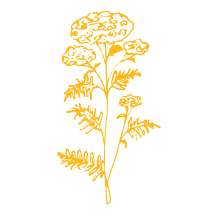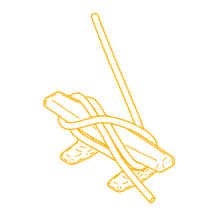
“Long-term isolation produces clinical effects that are similar to those produced by physical torture. It leads to increases in suicide rates, and even mentally healthy individuals find the experience extremely difficult to endure.”
—from Change is Possible: A Case Study of Solitary Confinement Reform In Maine, a 2013 report from the American Civil Liberties Union of Maine
It’s a numbing number: 100,000.
That’s the number of people in solitary confinement in US prisons on any given day. It is also the number of hand-sewn stitches artist Ed Epping uses to embroider the solitary figure depicted in his piece, Isolate.
100,000.
“How do you translate potent data into something that is also visually interesting?” says Ed, recalling his challenge when in 2015 he first began The Corrections Project, an ongoing exploration of overcriminalization and mass imprisonment in the United States. “You have to first catch a viewer’s eye, then—from that—trust curiosity leads them to want to understand what the art is about.”
He’s certainly done that with Isolate, starting with what we see: in jumpsuit-orange, the silhouette of a solitary female figure curled in the fetal position; the word “NUMBER” in prison-stripe black and white branded across the center of a vintage stained canvas cot cover, eerily reminiscent of an animal hide.
The visual alone is compelling.
And then the viewer learns it’s comprised of 100,000 stitches sewn in a basic tally-mark pattern suggesting the marking of time.

Then the story behind those stitches: 100,000 people in solitary confinement, experiencing all the trauma and suffering such incarceration brings.
And then that word: “NUMBER.”
“There’s this double meaning,” notes Ed. “Depending on how you see the word, it can mean a different thing.” An objective reader may focus on the data and see a numeric reference, but “some who have been in the position the work depicts may read it as about numbness. That’s why I am attracted to heteronyms; they don’t decree how they are to be read.”
The Corrections Project is part of a long tradition of art aimed at spurring social change: one thinks of work by such practitioners as Joseph Beuys, Jose Posada, Adrian Piper, or Peggy Diggs (who also happens to be Ed’s wife). In keeping with that tradition, Ed aims to catalyze his audience to care, and to act.
Though his project is oriented toward a social issue, Ed’s focus on imprisonment and its related topics is rooted in personal experience.
“In 1956, when I was 7 years old, my father was sentenced and convicted to 5½ years in prison for defrauding funds from the state of Illinois,” recalls Ed. “He was an accountant, and was clever and manipulative; he knew how to manage numbers.”
Within six months of entering incarceration, Ed’s father became the bookkeeper for the prison warden and within three years he began living in the prison greenhouse, removed from the general prison population.
“It was because he was white,” notes Ed. “And his privilege got passed on to me. While he was imprisoned we never had to leave our upper-middle class home; we never were hungry. We weren’t wealthy, but we were privileged.”
For decades, Ed’s formative childhood experience percolated. It was not until he approached retirement from years of teaching art that he focused on the implications of his privilege, and what he wanted to do about it.
His answer became The Corrections Project.
“Though the project is prompted by my relationship to my father’s prison experience, that’s not what it’s about. I wanted to explore incarceration and over-criminalization more broadly, and look at the populations most impacted by criminal justice abuse: Black and Brown people.”
Grim statistics—such as that Black people are five times more likely to be part of the 2.3 million incarcerated in the U.S. than white people, and Latinx people are twice as likely—are embedded throughout Ed’s project. We see this in pieces such as the Corrections Project Pamphlets, and Blanket, the project’s first undertaking and still a work-in-progress.
Ed believes in his work, and hopes to catch the public’s attention more widely, becoming a pebble in a pond and sending out ripples of change. But The Corrections Project is ultimately an art project. As such, it is a kind of spiritual endeavor—an act of faith, with Ed’s hours in the studio a vigil for the unjustly imprisoned, and each artwork a kind of prayer for the incarcerated.
In this way, Isolate may be interpreted as a gesture of love toward the 100,000 living in daily trauma in rooms no bigger than a closet and deprived of all we think of as humane, each of the 100,000 stitches a “Hail Mary” for another hurting soul.
Ed Epping is an imagist and activist living in New Mexico who taught art at Williams College for 40 years, retiring as the A.D. Falk Professor of Studio Art in 2017. More of his work including The Corrections Project can be seen at his website.




